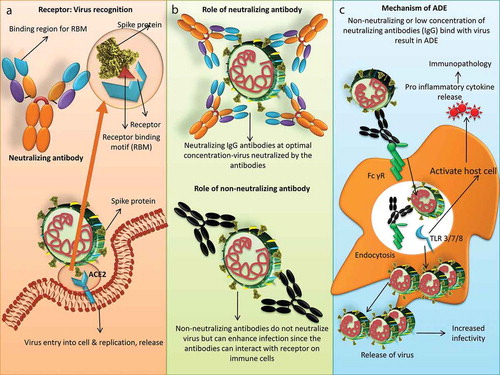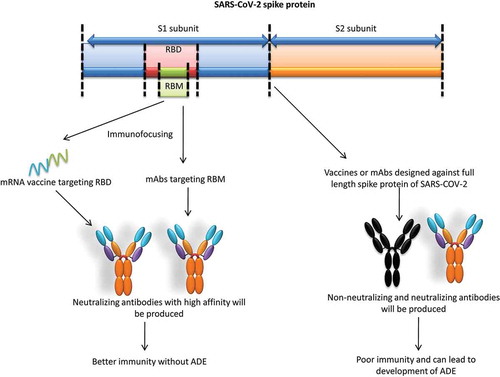Figures & data
Figure 1. Role of neutralizing and non-neutralizing antibodies in viral infection and mechanism of ADE in SARS-CoV-2. (a) Spike protein of SARS-CoV-2 binds with Angiotensin-Converting Enzyme 2 (ACE2) receptor and undergoes replication. ACE2 recognizes receptor binding motif on the spike protein and the same receptor-binding motif (RBM) is recognized by antibodies. (b) Neutralizing antibodies at optimal concentration neutralizes virus while non-neutralizing antibodies can enhance infection. (c) Mechanism of ADE in SARS-CoV-2. Virus-antibody (neutralizing or non-neutralizing) complex bind to Fcγ receptor on the surface immune cells like monocytes or macrophages leading to virus entry without the use of ACE2 receptor. This leads to increased virus replication and release. Virus-antibody binding to FcγR can also induce proinflammatory response. Viral RNA in the endosomes signal through Toll-like receptor 3 (TLR3), TLR7 or TLR8 activating the host cell to release proinflammatory cytokines which leads to immunopathology


